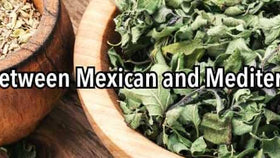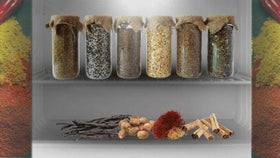How to Work with Dried Mushrooms
A Guide to Using Dried Mushrooms in the Kitchen
The versatility and deep umami flavor of mushrooms has set them up to be included in nearly every type of global cuisine. Many types of the popular fungi are only available in their fresh form for a short amount of time each year, though. One might conclude that the scarcity of these mushrooms is part of the appeal. But, while certain mushroom varieties fall into that category of scantiness, they do uphold both their flavor and textural properties when dehydrated. That means, enjoying such mushrooms year-round is possible if you know how to work with their dried form. That is exactly why we put together this guide on using the glorious dehydrated fungi in the kitchen.
Explore Our Full Line Of Gourmet Dried Mushrooms & Truffles
Tips and tricks for working with dried mushrooms
How to reconstitute dried mushrooms
Once dried mushrooms are reconstituted, they can be used in the same way as their fresh counterpart—whether you are making a soup, roasting, stuffing, or anything else. So how do you rehydrate them? Simple! Just immerse them in water and let them steep for about a half hour. Once you remove them from the liquid, don’t toss it out; use it in place of water in other dishes. Try cooking pasta, polenta, or rice in the liquid to add that incredible mushroom flavor to an otherwise flavorless vessel for sauce.
Using dried mushrooms in place of fresh in a recipe
What if you are following a recipe that calls for fresh mushrooms? How do you know how many dried mushrooms to use in place of fresh? A good rule of thumb is when a recipe calls for a pound of fresh, replace it with 2 oz of reconstituted dried mushrooms.
Will dried mushrooms become rubbery when reconstituting?
No. If prepared correctly, texturally, most mushrooms should be nearly indistinguishable from fresh mushrooms. Certain varieties of mushrooms tend to have a more rubbery texture naturally, and those are rarely dehydrated. Instead, dried mushroom varieties are typically chosen for their firmer composition.
What can you do with dried mushrooms?
The uses for dehydrated mushrooms are endless. Mince them and use as a filling for ravioli or manicotti, sauté them with garlic and add to risottos, pulse in a food processor for a flavorful crust on steak or chicken. Check out some of the recipes we’ve used our dried mushrooms for:
Vegan French Onion and Mushroom Soup
Lemon Scented Roasted Brussels Sprouts and Morel Mushrooms
Homemade Pasta with Mushroom and Rosemary Cream Sauce
Vegan Bolognese with Morel Mushrooms
Mac and Cheese with Morels and Herbed Breadcrumbs
How to buy and store dried mushrooms
First and foremost, like any specialty foods, you want to make sure you are purchasing your mushrooms from a trusted source. If the price seems too-good-to-be-true, the product will likely lack quality. If you can peer into the package, you should see whole or sliced specimens that resemble their true form, not bits and pieces that have been crushed or otherwise tainted.
*****
Like anything new, using dried mushrooms like morels and porcinis might be intimidating at first, but now that you have a better understanding of how simple it is to utilize these flavorful, nutrient-packed mushrooms, there is no reason to hesitate any longer. In fact, not only are they a perfect replacement for fresh in most recipes, there are additional perks—they pack in a more concentrated flavor, for one, and let’s not forget the depth of flavor that the rehydration liquid can add to other dishes.







Slofoodgroup
Author